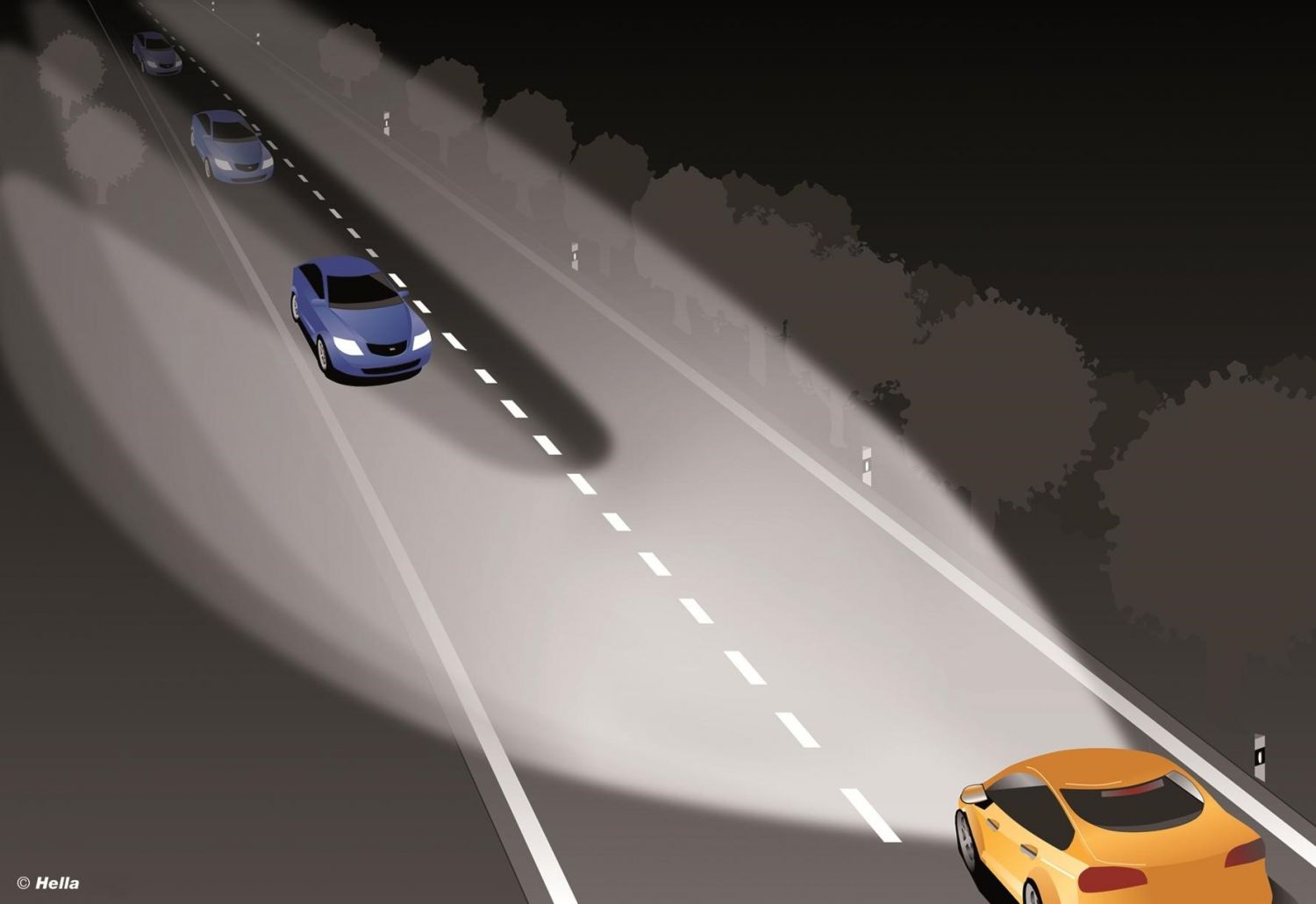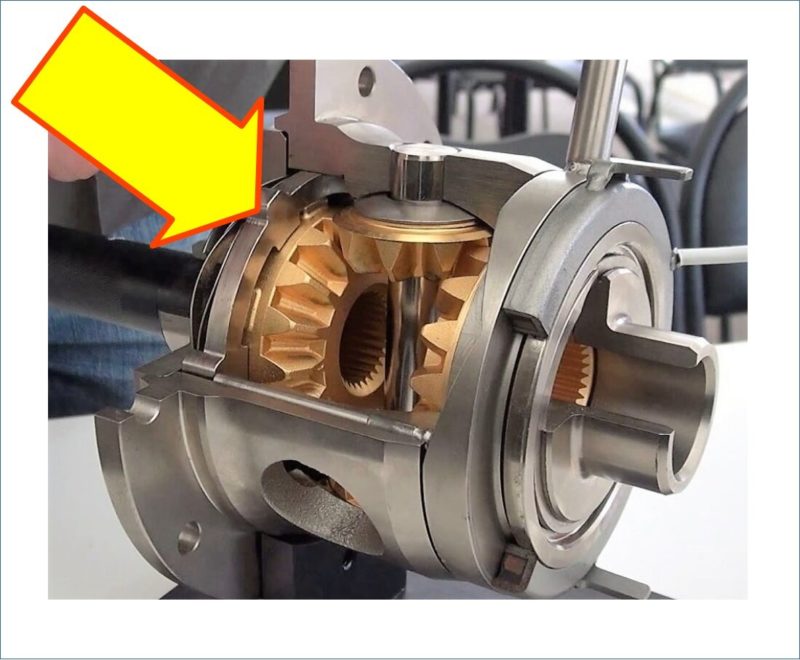
Differential lock EDL
Electronic differential lock EDL is a microprocessor mechanism that automatically regulates the distribution of torque between the drive wheels. The system effectively prevents the wheels of the drive axle from slipping when starting off, accelerating and entering a turn on a wet or icy road surface. It works if the sensors detect the slippage of the drive wheel, and brakes each wheel separately,
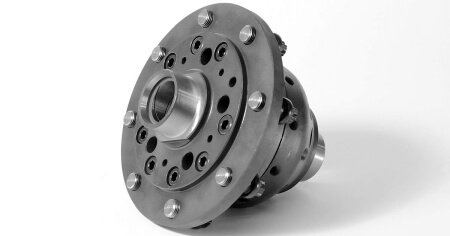 The EDL system is a development of Volkswagen and first appeared on cars of this brand. The principle of operation of the system is based on the braking of those wheels that begin to scroll due to lack of traction. The differential device lock system exerts a control effect on the brakes, which leads to forced braking of the drive wheel in pair, if the traffic situation requires it.
The EDL system is a development of Volkswagen and first appeared on cars of this brand. The principle of operation of the system is based on the braking of those wheels that begin to scroll due to lack of traction. The differential device lock system exerts a control effect on the brakes, which leads to forced braking of the drive wheel in pair, if the traffic situation requires it.
EDL is a complex and high-tech system, it involves sensors and mechanisms of related systems - for example, ABS and EBD. At the moment of slippage, the wheel of the leading pair will be automatically braked, after which it is supplied with enhanced torque from the power unit, due to which its speed is leveled, and the slip disappears. The work of EDL is complicated by the fact that today almost all cars are produced with a connected wheelset and a symmetrical differential. This means that the differential at the moment of forced braking on the wheel increases the speed on the second wheel in the common wheelset. Therefore, after braking, it is necessary to apply maximum speed to the wheel that was slipping.
Features of using EDL and its device
The differential device blocking system belongs to the complex of vehicle active safety systems. Its use is carried out in a fully automatic mode. That is, without any action on the part of the driver, the EDL controls (increases or reduces) the pressure in the brake system on each wheel in the drive pair.
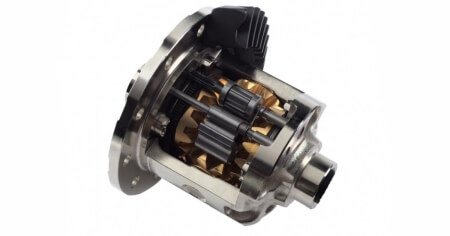 The functionality of the system is provided by the following mechanisms:
The functionality of the system is provided by the following mechanisms:
- fluid return pump;
- magnetic switching valve;
- back pressure valve;
- electronic control unit;
- set of sensors.
The EDL is controlled by the electronic block of the anti-lock braking system ABS, for which it is supplemented with some circuits.
The differential device locking system can be installed not only on front-wheel drive or rear-wheel drive cars, that is, not only on axles. Modern 4WD SUVs are also actively equipped with EDL, only in this case the system works on four wheels at once.
The combination of ABS + EDL allows you to achieve ease of driving and avoid slipping moments while driving. To compare control mechanisms, you can sign up for a test drive at FAVORIT MOTORS, as the company's showroom offers a large selection of cars with different levels of equipment.
Three cycles of the differential lock system
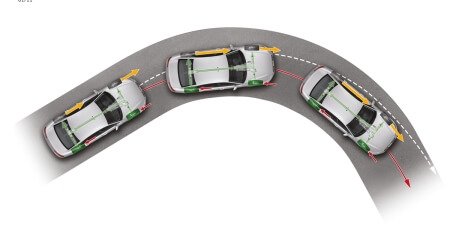 The work of the EDL is based on cyclicality:
The work of the EDL is based on cyclicality:
- injection of high pressure in the system;
- maintaining the required pressure level of the working fluid;
- pressure release.
The sensors installed on the wheel mechanisms react to all changes in the movement of each of the driving wheels - an increase in speed, a decrease in speed, slipping, slipping. As soon as the sensors-analyzers record slip data, the EDL immediately sends a command through the ABS microprocessor unit to close the switching valve. At the same time, another valve opens, which provides rapid high pressure build-up. The reverse hydraulic pump is also turned on, creating the necessary pressure in the cylinders. Thanks to this, in an extremely short time, effective braking of the wheel, which began to slip, is carried out.
In the next step, EDL eliminates the risk of slipping. Therefore, as soon as the braking force is properly distributed to each wheel, the stage of holding the pressure of the brake fluid begins. To do this, the return flow valve is turned off, which allows you to maintain the desired pressure for the required period.
The final stage of the system operation begins after the vehicle has successfully passed the obstacle. To give it speed, the EDL simply relieves the built-up pressure in the brake system. The wheels immediately receive torque from the engine, resulting in an increase in speed.
Most often, the differential lock system uses several repeating cycles at once to ensure the fastest recovery from slip. In addition, it allows you to give the vehicle additional stability.
Recommendations for drivers of vehicles with EDL
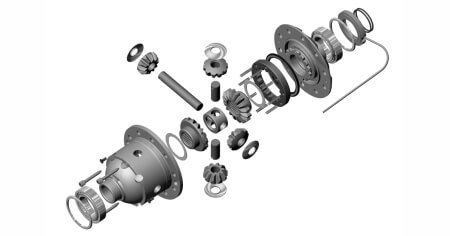 Specialists of FAVORIT MOTORS Group of Companies note several nuances that owners of all vehicles equipped with the EDL system should be aware of:
Specialists of FAVORIT MOTORS Group of Companies note several nuances that owners of all vehicles equipped with the EDL system should be aware of:
- due to the specifics of the system, a difference inevitably arises between the speed modes in the rotation of the wheels in the driving pair, therefore, the total speed of the vehicle at the time of EDL activation should not exceed 80 kilometers per hour;
- in some situations (depending on the type of road surface) the change of cycles of the system may be accompanied by significant noise;
- it is recommended to use the gas and brake pedals when the EDL is triggered, taking into account the road surface;
- when accelerating on ice or on snow, it is not recommended to actively use the gas pedal. Despite the operation of the system, the leading pair of wheels may turn slightly, due to which there is a risk of losing control of the car;
- completely disabling EDL is not recommended (the system turns off automatically to prevent overheating of drives and turns on if necessary);
- in some cases, when the ABS malfunction indicator light comes on, the defects may be in the EDL system.
Drivers are also advised not to rely entirely on the operation of the differential lock system, but to always follow the basic rules for safe driving on roads with any surface.
In the event of any malfunctions in the operation of the electronic differential lock system, it is advisable to immediately contact specialized auto centers. The FAVORIT MOTORS Group of Masters team has all the necessary skills and modern equipment to perform diagnostic procedures, settings and repairs of complex vehicle active safety systems.
